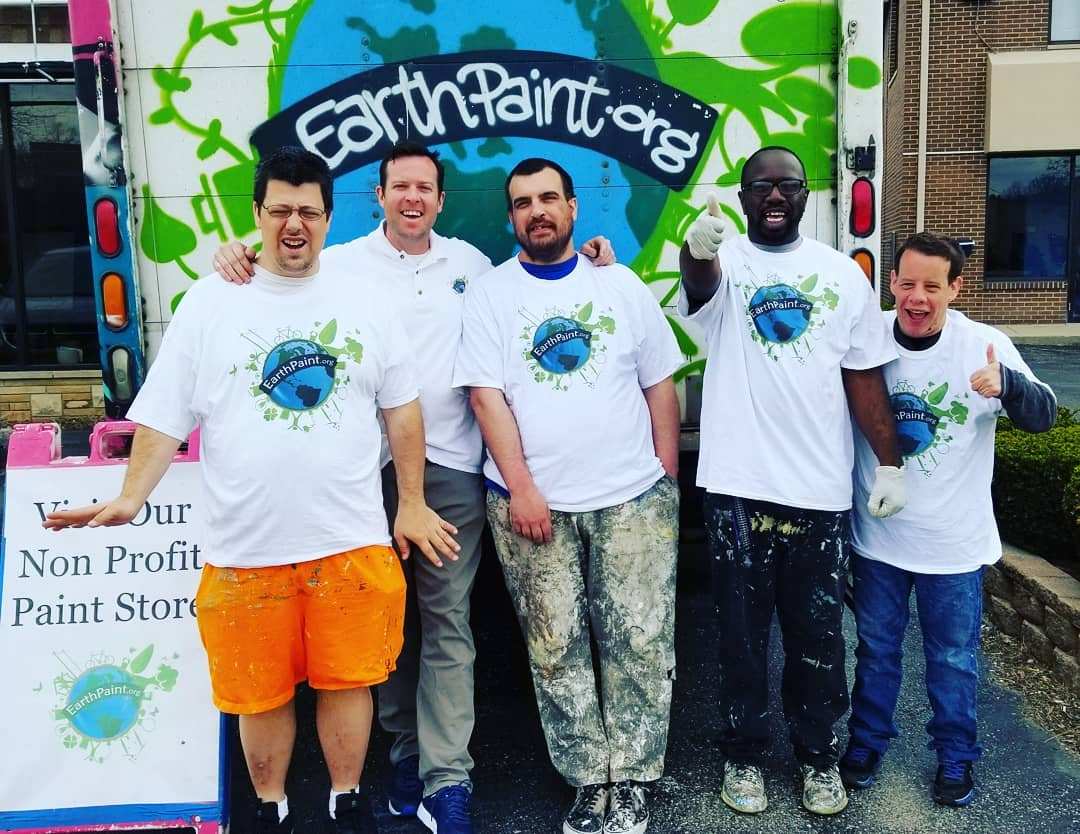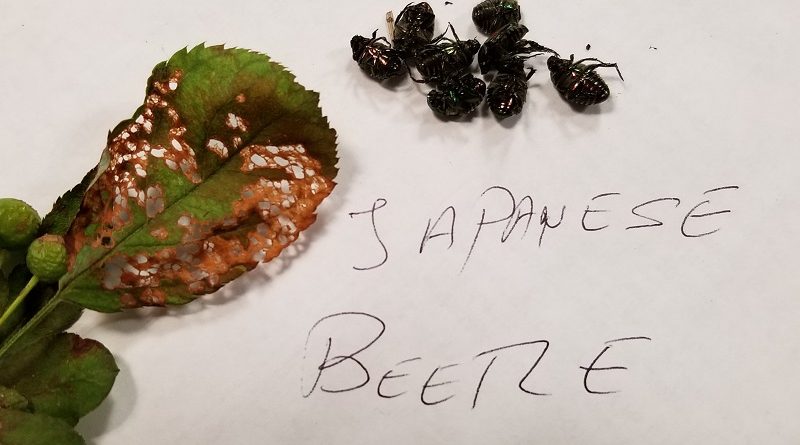Skeet’s Holiday Critter Carnival
Podcast: Play in new window | Download (Duration: 1:32:39 — 44.9MB)
Subscribe: Apple Podcasts | Spotify | Android | iHeartRadio | Podchaser | Email | TuneIn | RSS | More
(December 1, 2019) Question: What’s the difference between Skeet’s Traveling Critter Carnival and Skeet’s Holiday Critter Carnival? Answer: About four months. Our friend M.D. Skeet from major sponsor Bartlett Tree Experts is back to discuss tree care issues this morning. He last visited us at the end of July this year and brought along some critter friends. As it turns out, most of them were dead (check out the photo), but that was probably for the best.
 Don’t get us wrong. Peggy and I love Skeet and we love it when he brings critters into the studio. So far, that means insects–usually insects that cause trouble in your yard. So when Skeet mentioned that he would be bringing critters for his appearance this week, I was a little surprised. After all, we’ve already had at least a couple of brutal freezes, some snow, and we’re well on our way to winter. But he says that he’ll have examples of magnolia scale and bag worm. In fact, he just removed them from trees this week!
Don’t get us wrong. Peggy and I love Skeet and we love it when he brings critters into the studio. So far, that means insects–usually insects that cause trouble in your yard. So when Skeet mentioned that he would be bringing critters for his appearance this week, I was a little surprised. After all, we’ve already had at least a couple of brutal freezes, some snow, and we’re well on our way to winter. But he says that he’ll have examples of magnolia scale and bag worm. In fact, he just removed them from trees this week!
Skeet also says that dormant seasons is tree care season. Oaks and elm trees need to be pruned during this time. In fact, this is pruning time for all deciduous trees. When the leaves have dropped, the tree’s structure can be seen more easily. Skeet says look and listen for dead branches, split branches and broken branches.
He also sends a regular newsletter out of the Bartlett Bolingbrook office, where he works. About a week ago, when the leaves on deciduous trees seemed to be desperately hanging on, he wrote this.
Marcescence is the term used to describe leaf retention, or trees holding leaves. In a ‘normal’ fall, this is common with oak, American beech, Witch Hazel, Hornbeam, and Hophornbeam trees.
In a ‘normal’ fall season, as deciduous trees and conifer trees prepare to shed their leafy summer coats/leaves, the cells at the interface between the twig and the end of the leaf stem release enzymes and form an abscission layer that “unglues” the leaf/needle. This separates the leaf/needle from the vascular bundles, allowing it to fall free. All trees shed leaves/needles every fall. Conifers generally retain their needles for more than one year, and drop/shed approximately 1/3 of the needles.
What we are seeing is that early cold weather or frosts may interrupt the abscission process or “kill” leaves quickly. In these cases, the occurrence of marcescent leaves may increase.
Marcescent leaves are often more common with smaller trees or more apparent on lower branches of larger trees. In the case of smaller trees, which in forest conditions would be growing beneath taller trees, the reduced sunlight might slow the abscission process. By doing this, the understory tree leaves and the leaves on lower branches of larger trees would also have the opportunity to continue or even increase their photosynthetic process as upper leaves fall. Then, perhaps, leaves lower in the canopy are “caught” with cold temperatures and their leaves hang on.
The cold temperatures did not release the leaves or stopped the abscission process. Then the wet snow started to fall, held onto the branches and leaves; compounding the weight; and resulted in many broken limbs.
The record cold temperatures this week should not pose long term damage to the trees. We might see a little tip dieback on a few trees with smaller weak buds. Hopefully more leaves will drop, as we have been seeing more broke limbs at the ends of the branches.
Skeet and his holiday critter carnival are in the studio with us this morning.
Recycling paint and changing lives
The U.S. Environmental Protection Agency (EPA) estimated in a 2007 study that about 10 percent of the household paint purchased in the U.S. is not used and eventually discarded. At the time, this meant about 65 to 69 million gallons each year. According the Product Stewardship Institute (PSI), that’s now about 80 million gallons of household paint that goes unused, sitting in a basement or garage occupying space, waiting to be recycled, or simply tossed in the trash. While oil-based paint typically is not recyclable, latex paint is. The PSI website explains:
When dumped in the trash or down the drain, unused paint can contaminate our environment with volatile organic compounds, fungicides, and (in the case of very old paint) hazardous metals such as mercury, lead, cadmium, and hexavalent chromium.
Although most leftover paint can be easily reused, recycled into new paint, or repurposed into other recycled products, much of it is trashed because people don’t know where to take it, and often have no other options. Paint is the most expensive product for local household hazardous waste programs to manage, costing governments and taxpayers across the country millions of dollars.
Industry groups like the PSI are working at the policy level to help develop and pass state-level extended producer responsibility (EPR) laws “which require paint companies to develop and manage paint stewardship programs, make it easy for consumers to recycle unused paint and relieve much of local governments’ financial burden”. Under these paint EPR laws, consumers pay a small recycling fee when buying paint to help cover costs. According to PSI, this funding is used by an industry-run nonprofit called PaintCare to manage the programs. As of mid-2019, nine states (not Illinois) and Washington D.C, had passed EPR laws to create programs that have “recycled more than 16 million gallons of paint, created 200 jobs and saved governments (and taxpayers) over $150 million dollars.”
Unfortunately, most states don’t have EPR laws for paint. So when the recycling expense falls on the local municipalities or government agencies, resident programs may be discontinued. According to SCARCE, suburban DuPage County is no longer accepting latex paint. Neither is the City of Chicago, which explains on its website “How to Dispose of Latex Paint”:
There’s an easier way to dispose of leftover latex paint. The Household Chemicals & Computer Recycling Facility is no longer accepting latex paint because of its high disposal cost and very low environmental impact. The Illinois Environmental Protection Agency encourages residents to safely dispose of old or unwanted latex paint on their own. Here’s what you can do with your leftover latex paint:
Keep painting: Save leftover paint for a new project or paint scrap lumber or cardboard. Let the empty paint can dry, then throw it away.
Dry it up: Add kitty litter, shredded paper or sawdust to absorb the remaining paint in the can, or pour the paint into a bag. After it dries, throw the bag or absorbant [sic] material and paint can away.
Donate it: Ask friends and neighbors if they need paint for a small project. Local schools or theater groups sometimes look for free paint for sets and art projects.
Store it: Save the leftover paint for touch-ups in the future. To prevent the paint from drying out, wrap the can’s lid with plastic wrap, making sure the lid fits on securely and doesn’t leak
So we’re back to all those partial cans of latex paint in the garage.
 Enter a local organizations such as the non-profit EarthPaint, based in Wood Dale, IL and Michigan’s ePaint Recycling. EarthPaint founder Chris McCarthy and his team are working to not only collect and recycle unwanted paint, but to create a new, high-quality, locally-made paint from the recycled stuff using eco-friendly practices. We met Chris last month when he stopped by our both at the McHenry County College Green Living Expo, where he was also an exhibitor. He was also was featured in an article in Natural Awakenings Chicago magazine (full disclosure here, Peggy publishes that magazine)
Enter a local organizations such as the non-profit EarthPaint, based in Wood Dale, IL and Michigan’s ePaint Recycling. EarthPaint founder Chris McCarthy and his team are working to not only collect and recycle unwanted paint, but to create a new, high-quality, locally-made paint from the recycled stuff using eco-friendly practices. We met Chris last month when he stopped by our both at the McHenry County College Green Living Expo, where he was also an exhibitor. He was also was featured in an article in Natural Awakenings Chicago magazine (full disclosure here, Peggy publishes that magazine)
A longtime paint professional who had gained a real estate license, homeowners kept asking him what do with all the leftover paint they had in their homes. “I don’t know if I come from a generation that thinks of recycling first, but I never thought to throw it away,” McCarthy said. Instead, he collected the unwanted paint until he had a basement full of the stuff gathering dust.
So he set out to solve a problem, and in 2013 founded EarthPaint.org, a nonprofit organization with a special-needs workforce that recycles latex paint and sells the new, sustainable product throughout the Chicago area.
EarthPaint collects water-based paint and recycles it into a high-quality, affordable paint that’s available in 40 standard colors and can be used indoors and outdoors. The brand can be purchased at the Rebuilding Exchange in Chicago and Habitat for Humanity ReStores in Chicago, Chicago Heights, Elgin and Joliet, as well as their facility in Wood Dale.
Chris claims it’s a one-coat coverage, and the cost is much less than a new can of traditional paint brands. Getting consumers to make the switch from big box brands, however, is not easy.
One more thing. Chris is in the midst of a GoFundMe campaign called Save our Special Needs Program. He explains.
We are the only paint recycling program in the world with an emphasis on hiring and training people with special needs.
Almost everyone has house paint that they do not need and would like to recycle in the best way possible.
We have created a program that empowers adults with disabilities and trains job/life skills by collecting unwanted paint and recycling it into new paint and other products. We provide a service that people want but cannot find funding to provide…
We do have the opportunity to claim a donation match of $15,000 if we are able to raise that amount by the end of December. That means that each dollar gets us closer to our largest donation yet!
So, if you want to do something truly good for the holidays, why don’t you send a little cash their way. Chris joins us in the WCGO Studios this morning to talk about the challenges of recycling paint into a new consumer product and some of his new initiatives.


